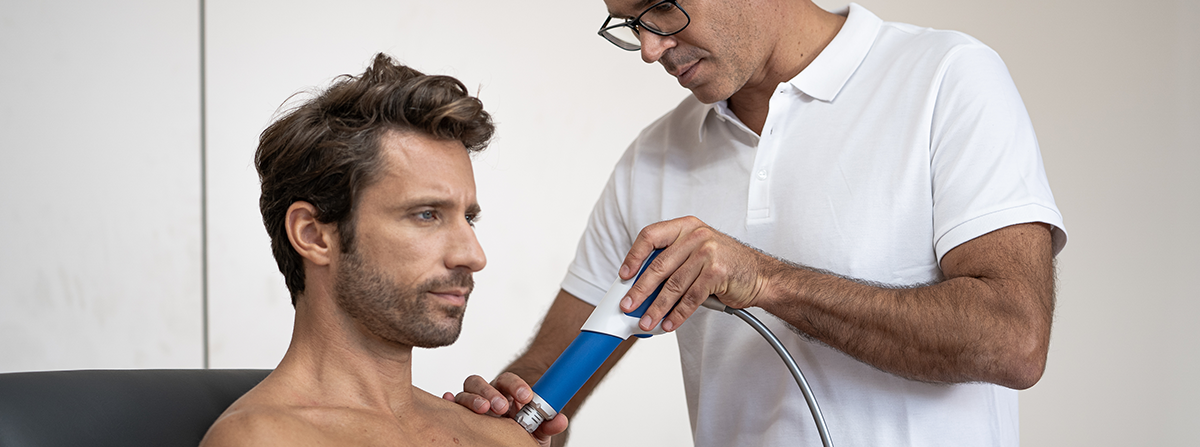La thérapie extracorporelle par ondes de choc (ESWT) utilise des impulsions acoustiques pour traiter certains troubles musculo-squelettiques. Il s'agit d'une modalité de traitement bien étudiée et couramment utilisée pour une variété de troubles musculo-squelettiques. La thérapie radiale extracorporelle par ondes de choc (rESWT) est utilisée avec succès pour :
- Les indications superficielles, comme la fasciopathie plantaire, la tendinopathie d'Achille, le syndrome de stress du tibia médial, le syndrome de douleur du grand trochanter, etc.
- 1er choix pour traiter les tendinopathies & entésopathies calcanéennes, les fasciopathies, les déchirures myotendineuses, les pathologies musculaires, les points gâchettes et les tissus spastiques.
- Pathologies subaiguës ou chroniques

